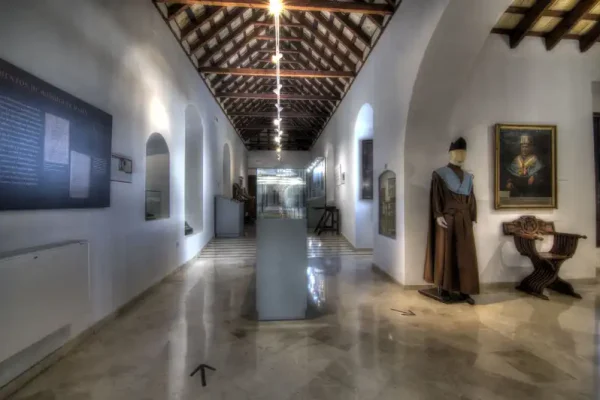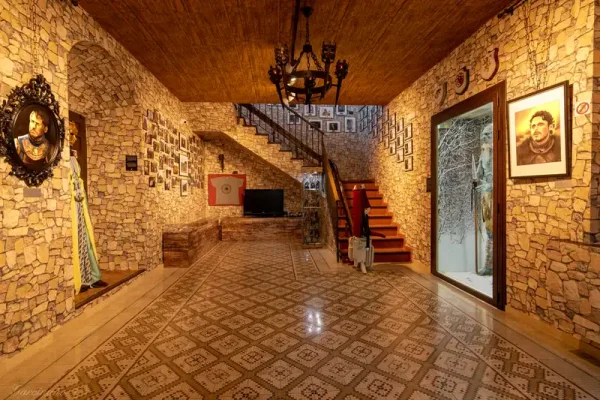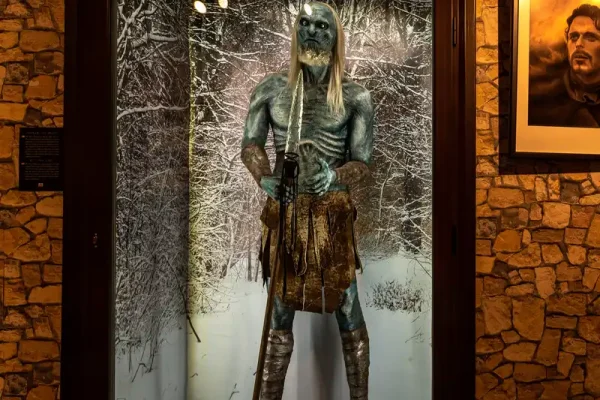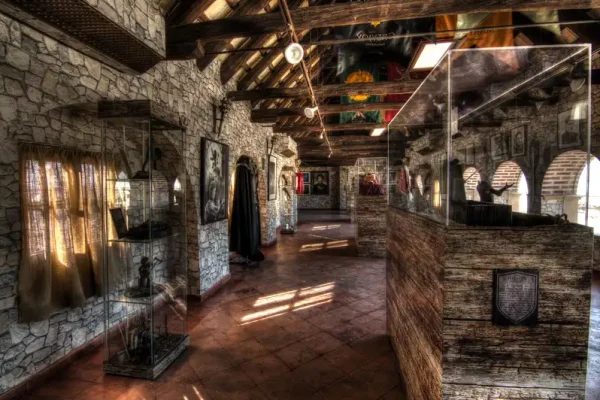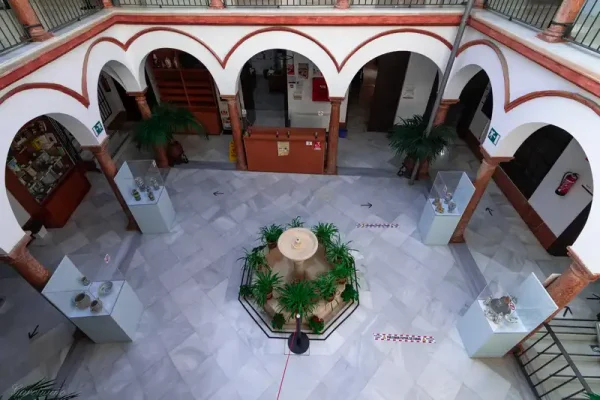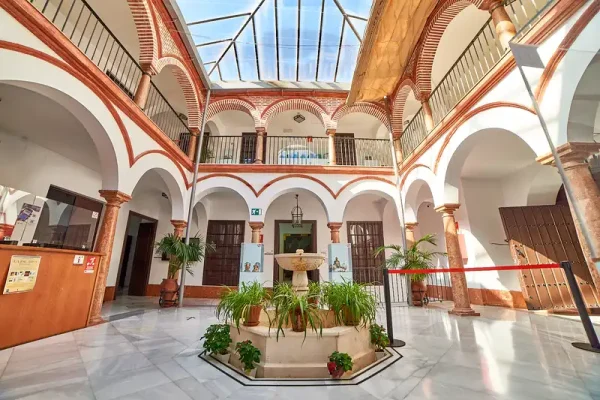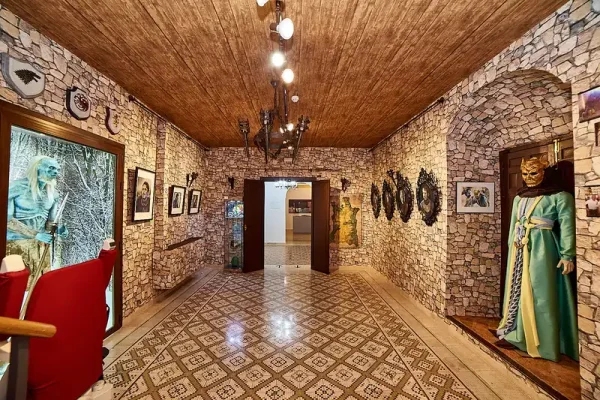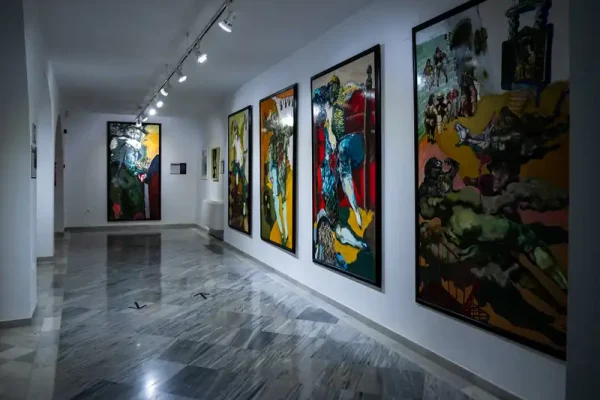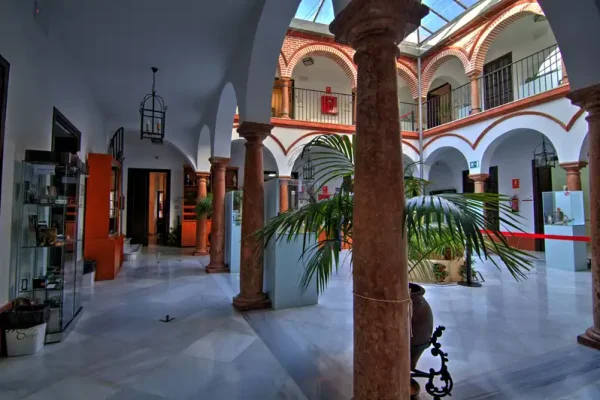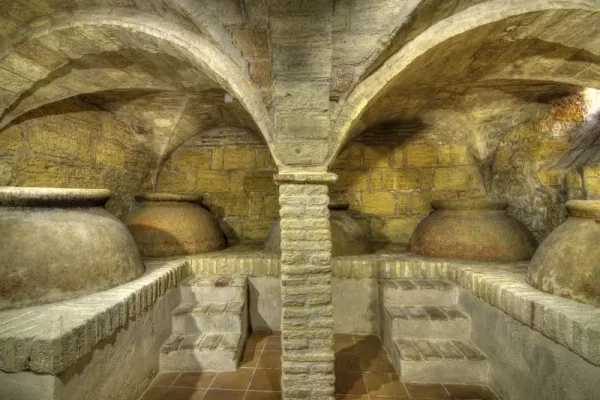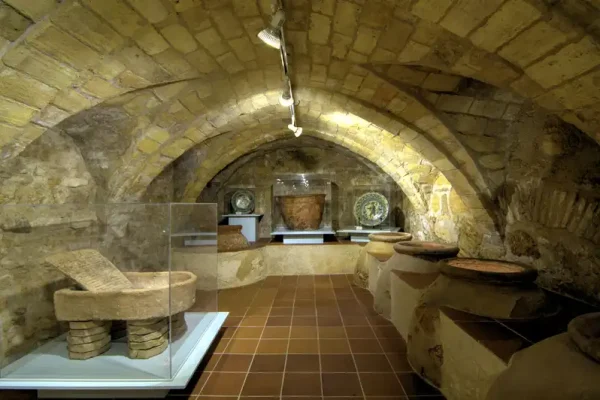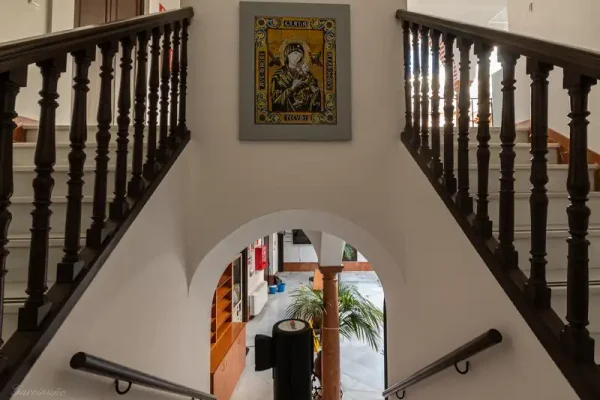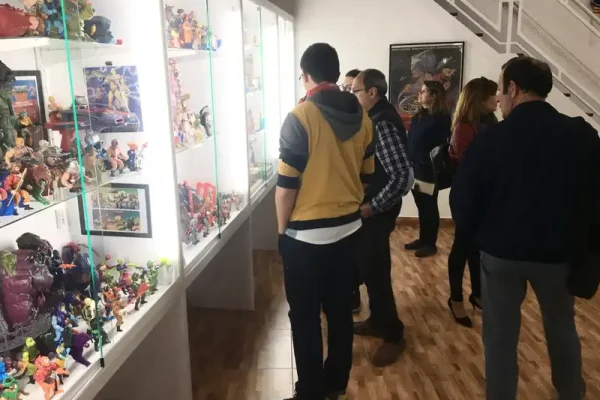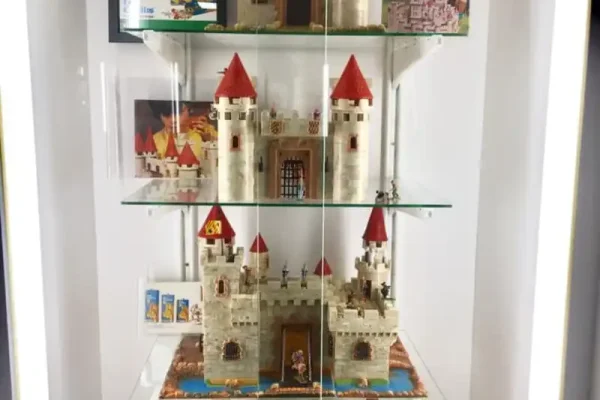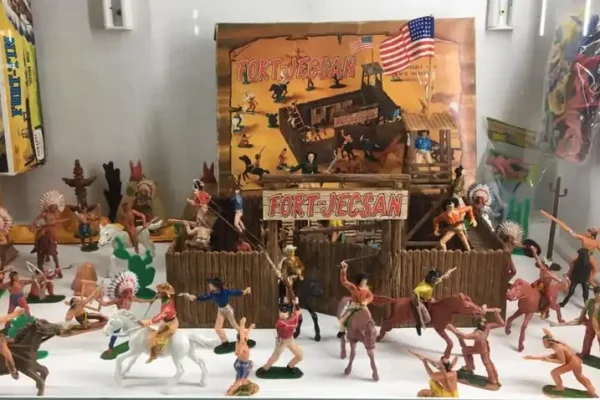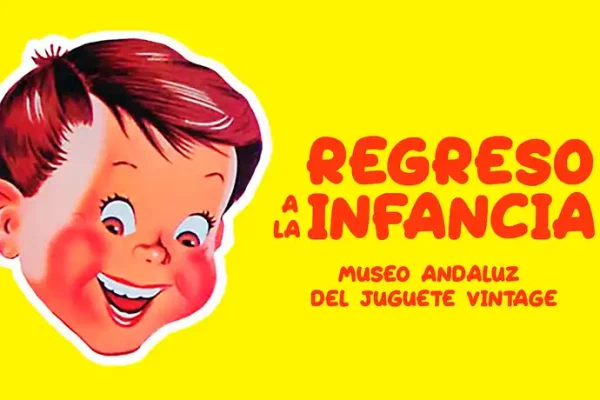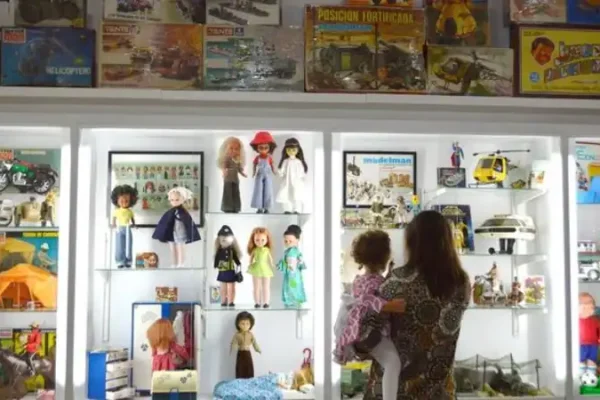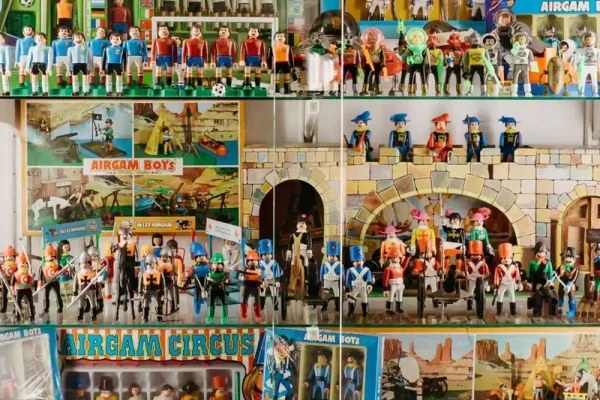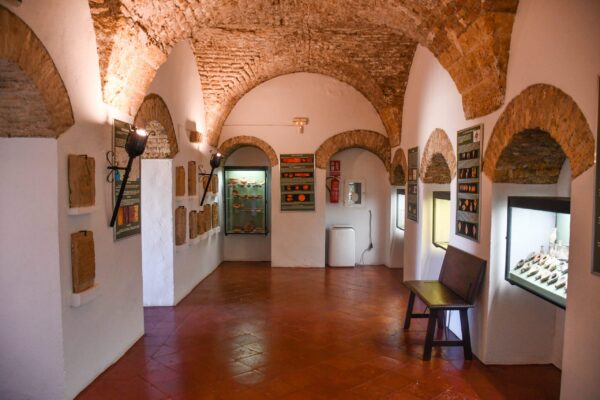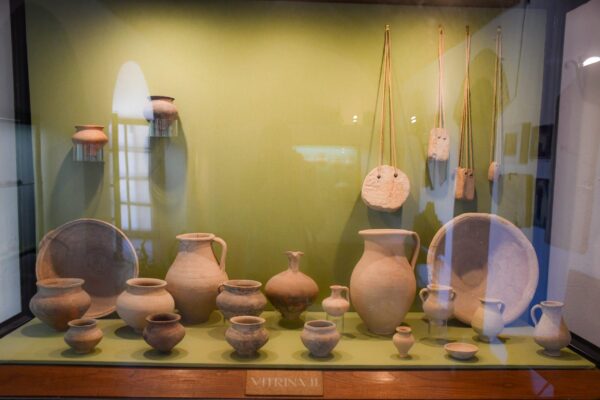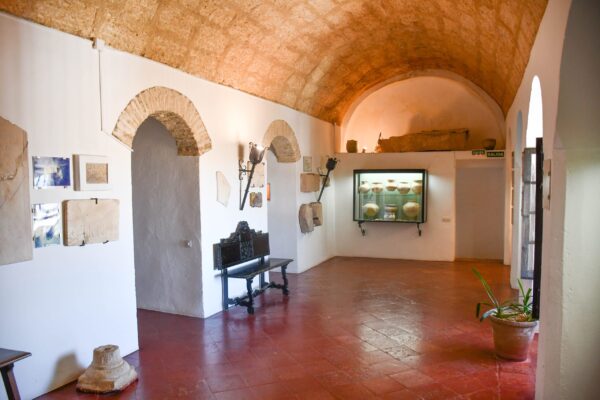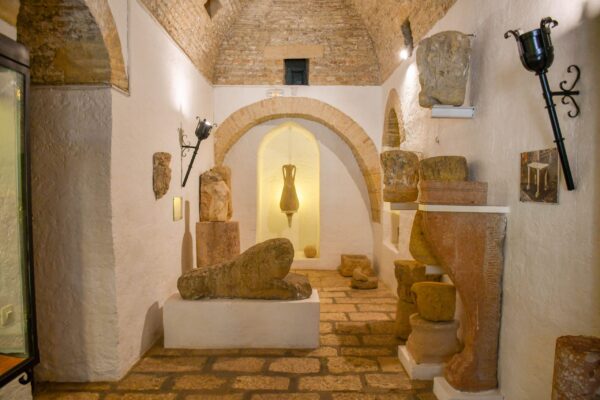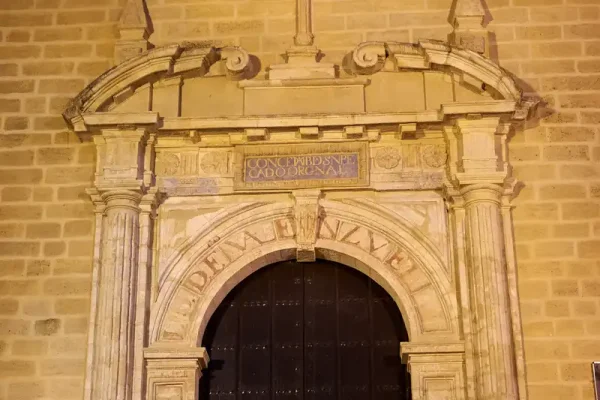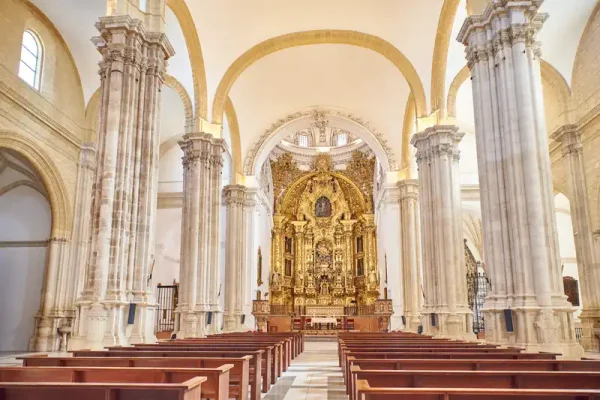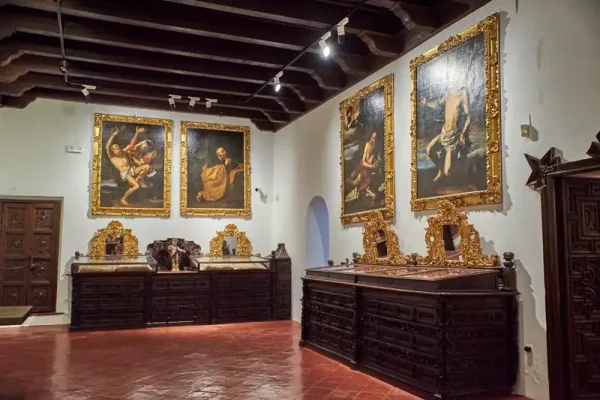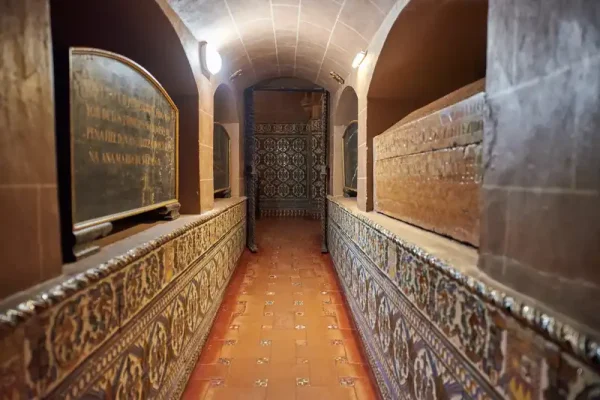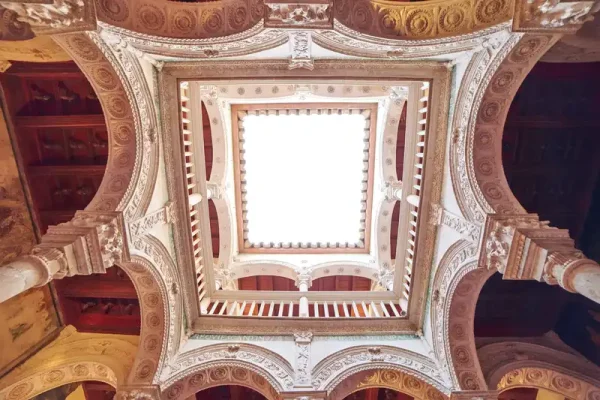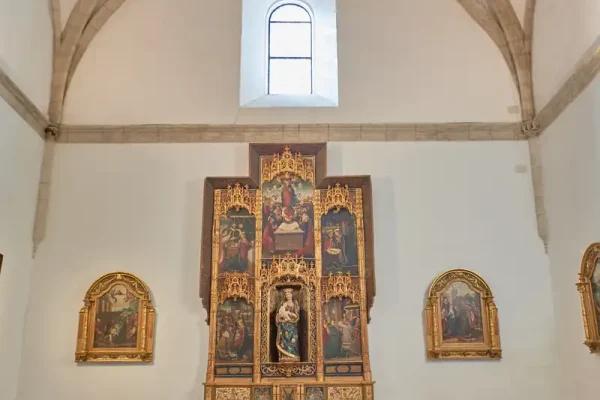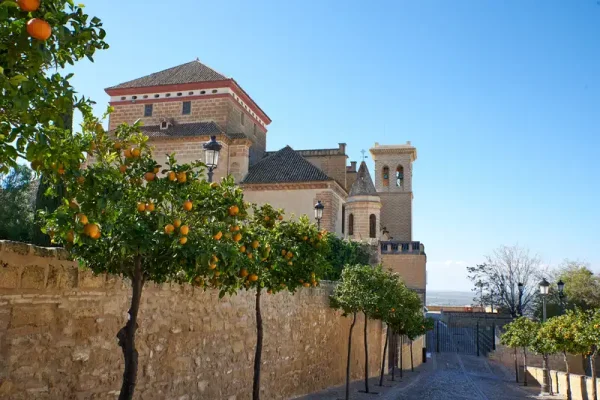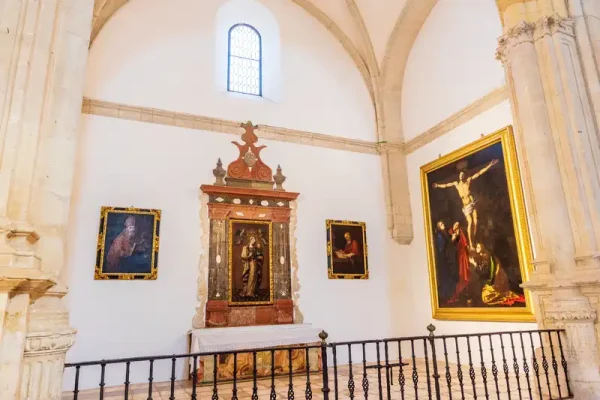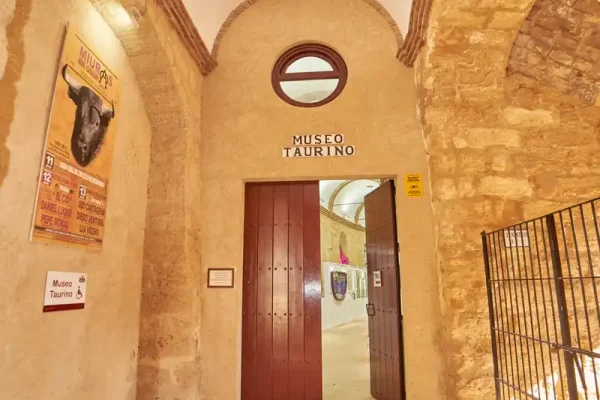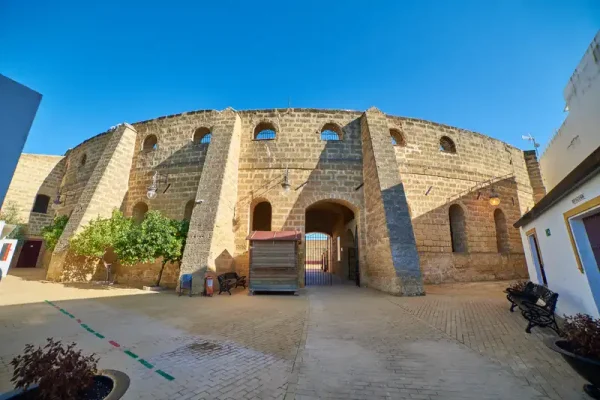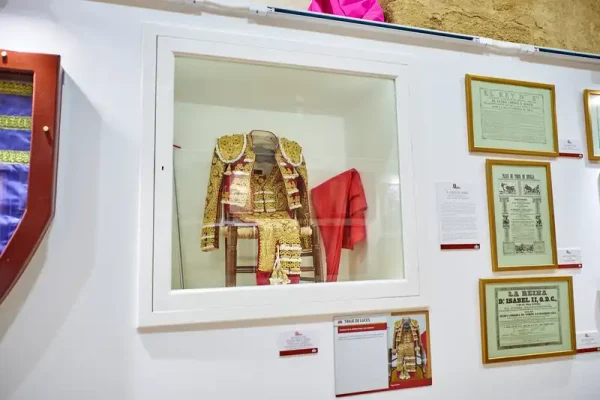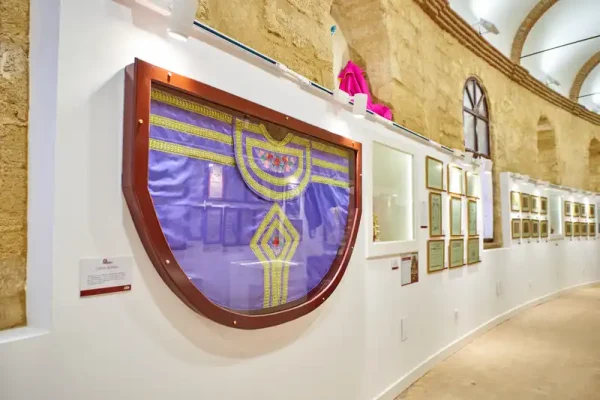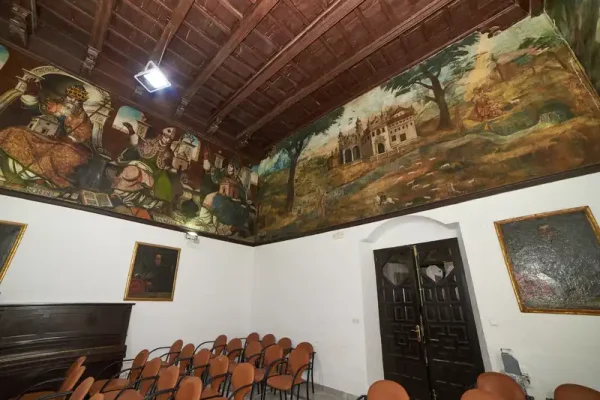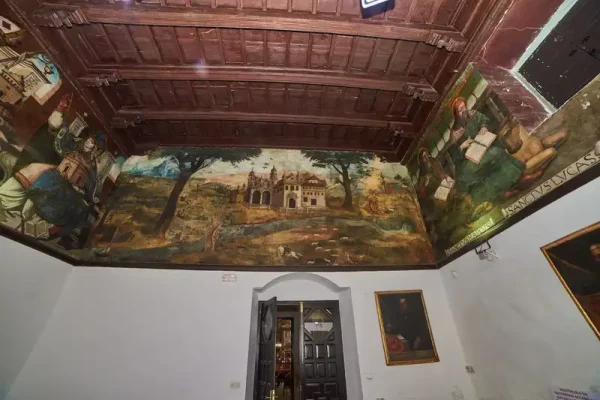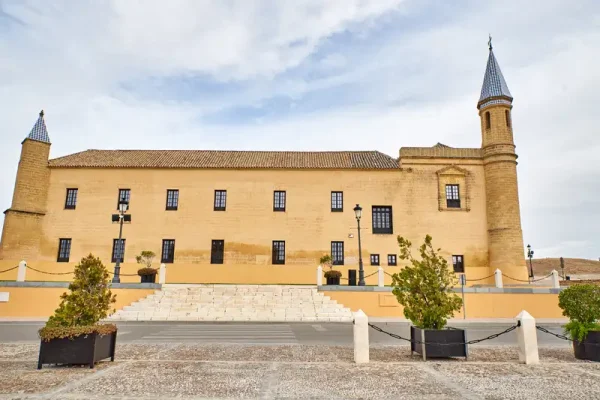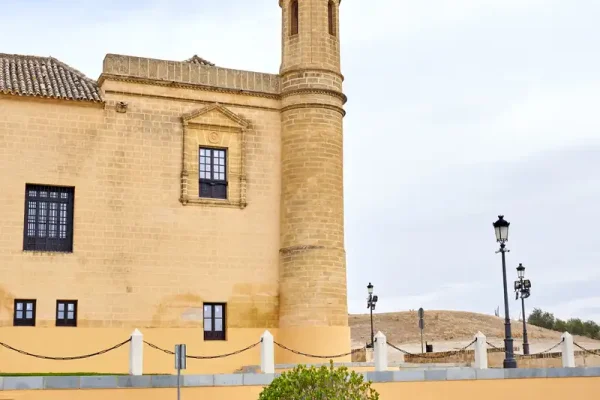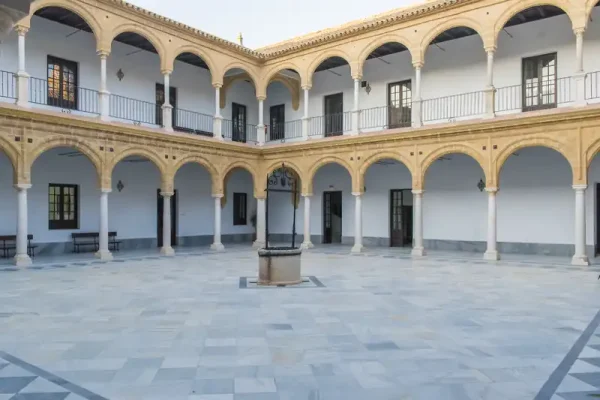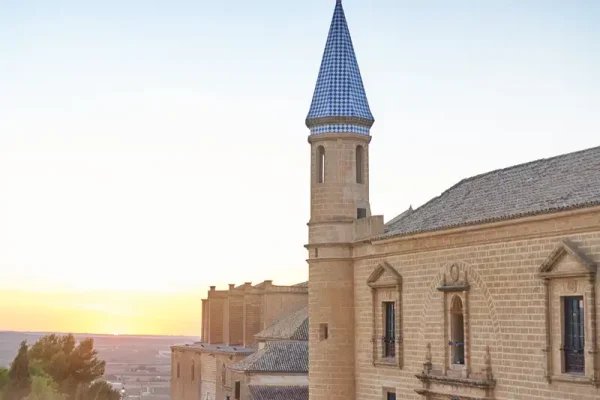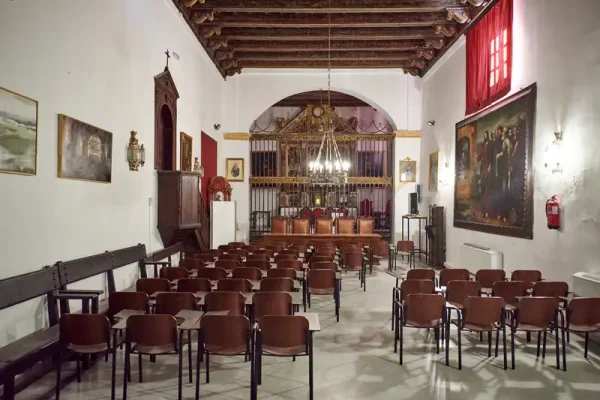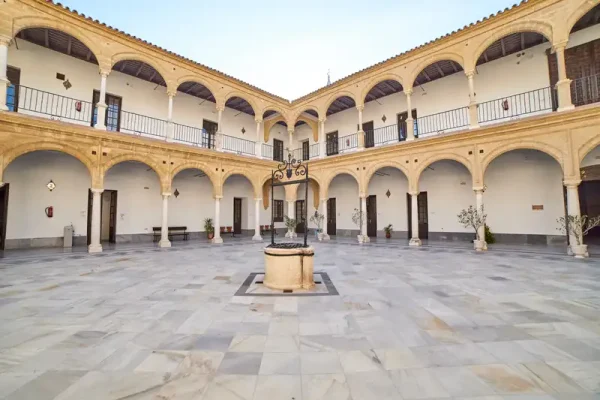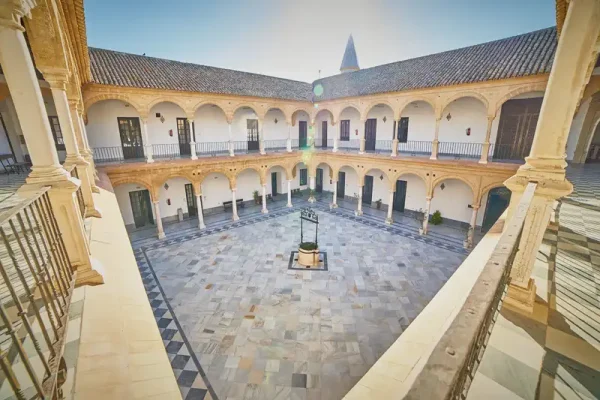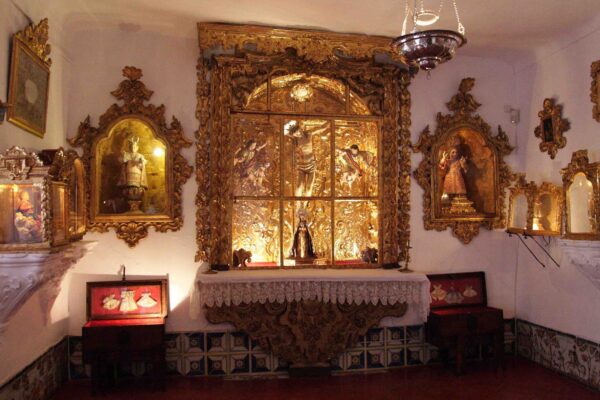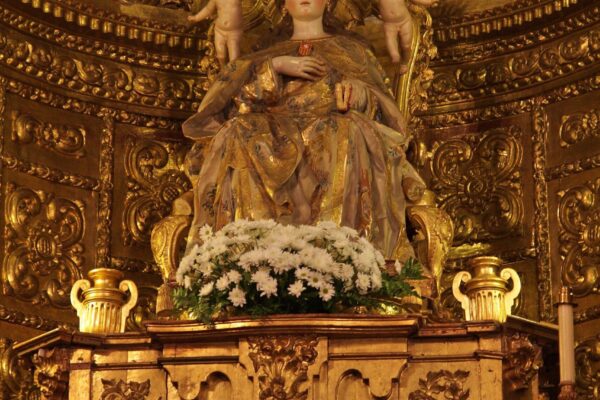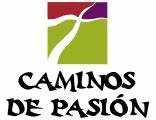


- Osuna Museum
- Andalusian Museum of Vintage Toys. Return to Childhood
- Archaeological Museum. Water Tower
- Museum of Sacred Art. Distinguished Collegiate Church
- Bullfighting Museum
- Former University of Osuna
- Museum of Sacred Art. Convent of the Incarnation
Osuna Museum
The Osuna Museum is located in the former Palace of the Arjona y Cubas Brothers, an 18th-century building that housed the Local Agricultural Chamber for much of the last century. The visit begins in the cellar of the palace, where we can find a series of earthenware jars that were used to store wine, oil and food such as meat and fish. Continuing the visit, we will enjoy the following permanent rooms on the ground floor, next to the two temporary exhibition rooms: the Rodríguez Jaldón collection and the Rodolfo Álvarez Santaló collection.
On the first floor, you will find: Collections from the municipal archive, Nobility and Power, the former photography studio of the Ruíz family, collections from the Old University, the Primitiva Ledesma printing press, the ‘El Bombo’ hat shop, and the Ice and Fire Room, dedicated to the international series ‘Game of Thrones,’ as part of the fifth season was filmed in our town in 2014.
The Osuna Museum is adapted and accessible, as it has a lift to the first floor, as well as a stair lift, and the information panels are in several languages, including Braille. The visitor service desk and the auditorium are equipped with magnetic induction loops.
Andalusian Museum of Vintage Toys. Return to Childhood
Museum dedicated to childhood in the 70s and 80s with a permanent exhibition of over 4,000 items, from toys to sticker albums, comics, etc.
25 Alfonso XII Street. Osuna-Seville
Contact: 657 34 87 99
Archaeological Museum. Water Tower
This tower, a bastion of the 12th-century Almohad walled belt, renovated in the 14th century by the Knights of Calatrava, is where the Archaeological Museum is currently located.
Its interior space consists of four rooms, spread over two floors. These rooms house archaeological remains found in Osuna itself, as well as some reproductions.
In the FIRST ROOM, we find a display of prehistoric remains and reproductions of Iberian reliefs found in Osuna at the beginning of the 20th century; the originals are housed in the National Archaeological Museum.
In the SECOND ROOM, Iberian ceramic pieces and votive offerings from the same culture. The exhibition of Roman objects begins in the same room.
Most of the Roman artefacts are located on the second floor, mainly ceramics and various Visigothic bricks.
The last room houses several display cases containing a variety of items. Terra sigillata from different periods, a numismatic collection and a magnificent set of Roman glassware enrich these simple display cases. In the same room, numerous Visigothic plaques dating from the 5th to 7th centuries are of great interest.
Museum of Sacred Art. Distinguished Collegiate Church
It was founded in 1535 by Juan Téllez Girón, 4th Earl of Ureña, when he obtained a papal bull allowing the existing parish church to also become a collegiate church. The temple was built on the site of the Castle Church, which had been completely destroyed by fire.
The exterior of the temple is striking for its severity; the church is built with ashlar stone extracted from the quarries of Osuna.
On the main façade, four square buttresses stand out as the main features of its beautiful doorway. On the left side stands the tower, which was begun in 1914 and remains unfinished.
Three doors provide access to the Collegiate Church. There are two others that have been blocked up since the 18th century, located at the ends of the side naves. The Puerta de la Cuesta door opens opposite the Monastery of La Encarnación and provides direct access to the Gospel nave. The door that connects to the Epistle nave is called the Puerta del Sol.
The interior of the Collegiate Church can be accessed through the small Patio del Panteón de los Duques de Osuna or Holy Sepulchre, which was built between 1544 and 1555 and is one of the most beautiful examples of Spanish Renaissance architecture. Two cloisters are carved into stone columns, whose segmental arches rest on large abaci decorated with grotesques. On the ground floor, the arches are separated by Plateresque-inspired Ionic pilasters. The walls feature 16th-century paintings, with the Last Supper as the central motif, which are scheduled for restoration.
Beyond the courtyard is the Sacristy of the Pantheon, a small, elegantly designed room decorated in the Plateresque style and covered with green and gold polychrome coffered ceilings. The sacristy leads to the Chapel of the Virgin of Granada, a work attributed to Guillén Ferrant and an exceptional piece from the 16th century.
The Pantheons are built beneath the Collegiate Church and the Chapel of the Holy Sepulchre. They consist of several rooms or chapels, called San Marcos, Nuestra Señora del Reposo or Belén, Galería and Capilla del Calvario or De Profundis.
Through a magnificent Plateresque-style doorway, we pass from the Pantheon to the Collegiate Church. The first thing we see is the Chapel of the Immaculate Conception, whose main ornament is an altar dedicated to Christ of Mercy, which houses a magnificent carving of Christ on the Cross, the work of Juan de Mesa, made in 1623. The altarpiece that presides over the chapel is dedicated to the Immaculate Conception.
From the Chapel of the Immaculate Conception, you can access the interior of the church, which has a rectangular floor plan with three naves and nine chapels: the Main Chapel, the Tabernacle, Our Lady of Antigua, Souls, Saint Peter, Our Lady of the Kings, Baptismal, and Saint Anne. They contain magnificent altarpieces, images, and paintings by renowned artists.
The museum is accessed through a door, also in the Plateresque style, built in the mid-16th century. Its rooms are the former sacristy and the adjoining rooms.
Its four rooms house works of great importance, such as paintings and ornaments created by important artists from the 16th to the 19th centuries.
Among the paintings, the following stand out: Saint Jerome and the Angel of Judgement, Martyrdom of Saint Sebastian and Martyrdom of Saint Bartholomew, all painted by José de Ribera ‘El Españoleto’ in the 17th century.
Bullfighting Museum
The Osuna Bullring began construction in early 1902 with popular participation, based on designs by Aníbal González.
It was inaugurated on 13 May 1904 to transfer the bullfighting festivities that were previously held in the town squares. It was designed according to the layout that was becoming popular at the time: arena, barrier and alleyway. It was built on two concentric walls of Las Canteras sandstone and subdivided into eight sectors marked by eight original entrances. In the middle of the ring facing the bullpens, there is a vaulted, earthen tunnel reminiscent of the oval bowels of the amphitheatre in Itálica.
The arena, a circle almost forty-eight metres in diameter, is one of the largest on the peninsula. The stands have a capacity of six thousand five hundred.
The bullring also has a bullfighting museum dedicated to the history of the bullring and bullfighting.
It has been the privileged setting for several television commercials, short films, photo shoots and film shoots, the most important of which was part of the fifth season of the prestigious American series ‘Game of Thrones’ in 2014.
This new space was inaugurated in 2019 and is divided into three sections: the first is dedicated to the history of the bullring, the second to the history of bullfighting in the bullring, and the last section is dedicated to the culture of bullfighting.
The Bullfighting Museum in Osuna is adapted and accessible, as there are no architectural barriers and the signs are in Braille. The visitor service desk is equipped with magnetic induction loops.
Former University of Osuna
On 10 October 1548, Pope Paul III issued the papal bull ‘In Supereminenti Apostolicae Sedis,’ authorising the establishment of a General Study in the town of Osuna, dedicated to the Pure and Immaculate Conception of the Virgin Mary, to whom the founder had a special devotion.
For this reason, a rectoral document from 1820 states that it is ‘called the Colegio Mayor y Universidad Literaria de la Inmaculada Concepción de Nuestra Señora’ (Higher College and Literary University of the Immaculate Conception of Our Lady). Thus, the Ursaonian College-University was a pontifical institution, and perhaps this was one of the reasons why it was considered minor.
The request for this authorisation came from Don Juan Tellez de Girón, 4th Count of Ureña and father of the first Duke of Osuna, who wanted to found a college and a university in the capital of his estates, following the model of Alcalá de Henares, where students could obtain degrees that were as valid as those awarded by ‘Bologna, Salamanca, Alcalá de Henares and other general studies, with the same honours and privileges’.
The university never achieved royal recognition, only papal recognition. In his will, the founder urged his son, the future 1st Duke of Osuna, to obtain it, but there is no evidence that this was ever achieved; this is evident when, during a lawsuit in the Council of Castile, the documentation was requested. However, an enormous, luxurious inscription proclaiming this status can still be seen on the left wall at the entrance to the building. The same thing happened with other smaller universities such as Almagro; even the University of Seville, founded by Archdeacon Fernández de Santaella in 1505, did not receive this recognition until 1551, when it was granted by the city council.
On 8 December 1548, the chapel of the building was blessed by Don Sancho Trujillo, Bishop of Morocco and canon of Seville Cathedral, who was also the first collegiate.
The building was financed and endowed exclusively by the aforementioned count, whose family was one of the wealthiest in Spain. It housed fifteen major chairs at the University and eight minor chairs at the College, grouped around the faculties of Theology, Law (Canons and Laws), Medicine and Arts.
The Theology Faculty was the most popular since its foundation and the most attended. Let us not forget that its objective, like that of Alcalá de Cisneros, is to train ‘the leaders of a Church more worthy of Christ’.
As the founder enjoyed very good relations with certain religious orders—Dominicans, Augustinians, Franciscans, and Carmelites—he ensured that the chairs of this faculty were distributed among them.
The Faculty of Medicine always gave theoretical classes as it did not have an anatomical theatre. At one time it was very popular and its classrooms were attended by renowned doctors such as Gudiel and Solano de Luque.
The Faculty of Arts, preparatory to Medicine and Theology, functioned normally as it was structured, with no innovation other than the chair of Mathematics created by Philip II.
Francisco Maldonado was its first rector (1549-1553), hence its current name: ‘Escuela Universitaria Francisco Maldonado’ (Francisco Maldonado University School), and Diego Ramírez was the last (1821). Since 1995, the same building, duly renovated and adapted to the needs of modern higher education, has housed the common services and classrooms of the legal and economic area of the University School of Osuna.
The University of Osuna survived until the 1807 reform by Minister Caballero, when it was abolished along with ten other smaller universities, such as the University of Baeza. Its revenues and degrees were added to the University of Seville.
Despite its formal abolition, it continued to function poorly until the arrival of French troops in 1810, when the building was occupied and converted into French barracks. It continued to operate very precariously after the war until 1824, when it was finally closed down.
After many years without operating as such, the University School of Osuna reopened its doors to students in 1993.
Our university has now been offering its services to anyone who wishes to access them for thirteen years. During this time, we have made significant progress through a constant process of consolidation, which has enabled us to grow both qualitatively and quantitatively.
The University's main campus, located in a majestic building constructed in the 16th century, is fully equipped and adapted to the requirements of the most modern educational centres. It has information signs in Braille and magnetic induction loops in the auditorium and chapel, and houses the law and economics classrooms and common services, such as the Registrar's Office.
The University College also has an annex building, located a few metres from the main campus, where the nursing programme classrooms are located.
Among the many services and advantages offered by the University College, we highlight:
- Own scholarship system, fully compatible with general calls for applications.
- Transport routes subsidised by up to 50%.
- Internships arranged with a large number of companies and organisations.
- Support classes and personalised tutoring.
- Small groups of students.
The Francisco Maldonado School of University Studies in Osuna is affiliated with the University of Seville.
La actual oferta de estudios que se pueden realizar comprende los Grados en Finanzas y Contabilidad, Grado en Relaciones Laborales y Recursos Humanos, el doble grado de ambas, Grado de Administración y Dirección de empresas, Grado en Enfermería, Grado en Fisioterapia, Grado de Ciencias de la Actividad Física y del Deporte, y el doble grado de ambas, Grado en Educación Primaria, Grado de Infantil y el doble grado de ambas.
For further information about the University School of Osuna, please click on the following link: www.euosuna.org
Museum of Sacred Art. Convent of the Incarnation
This building was completed in 1549 and its original purpose was to serve as the Hospital de la Encarnación del Hijo de Dios (Hospital of the Incarnation of the Son of God).
In 1612, it was occupied by the Jesuits, and in 1626, the 4th Duchess of Osuna founded the monastery on the site of the old hospital, which was to be run by the nuns of the Royal and Military Order of Mercy.
The façade is made of brick, with the entrance framed by pilasters and topped with a broken pediment.
The interior of the church consists of a single nave covered with a barrel vault with openings. The main altarpiece is Baroque, with a sculpture of the Virgin of Mercy standing out in the main niche.
Through the church, we enter the courtyard. This courtyard is surrounded by an 18th-century Sevillian tile baseboard depicting biblical scenes, the five senses, the four seasons, street scenes, and nuns praying in chorus. There are also scenes of hunting and bullfighting.
Much of the interior of the cloister has been converted into a museum, arranged around the main cloister. The museum consists of four rooms, featuring an important collection of Baby Jesus figures, gold and silverwork, and significant works of religious imagery.


